
There are many Linux distributions. I can’t even think of coming up with an exact number because you would find loads of Linux distros that differ from one another in one way or the other.
Some of them turn out to be a clone of one another, while some tend to be unique. So, it’s a mess—but that is the beauty of Linux.
Fret not; even though thousands of distributions are around, in this article, I have compiled a list of the best Linux distributions available. Of course, the list can be subjective. But, here, we try to categorize the distros—so there’s something for everyone.
- Best distribution for new Linux users
- Best Linux distros for servers
- Best Linux distros that can run on old computers
- Best distributions for advanced Linux users
- Best evergreen Linux distributions
Best Linux Distributions for Beginners
In this category, we aim to list the distros which are easy to use out of the box. You do not need to dig deeper; you can start using it immediately after installation without knowing any commands or tips
Ubuntu
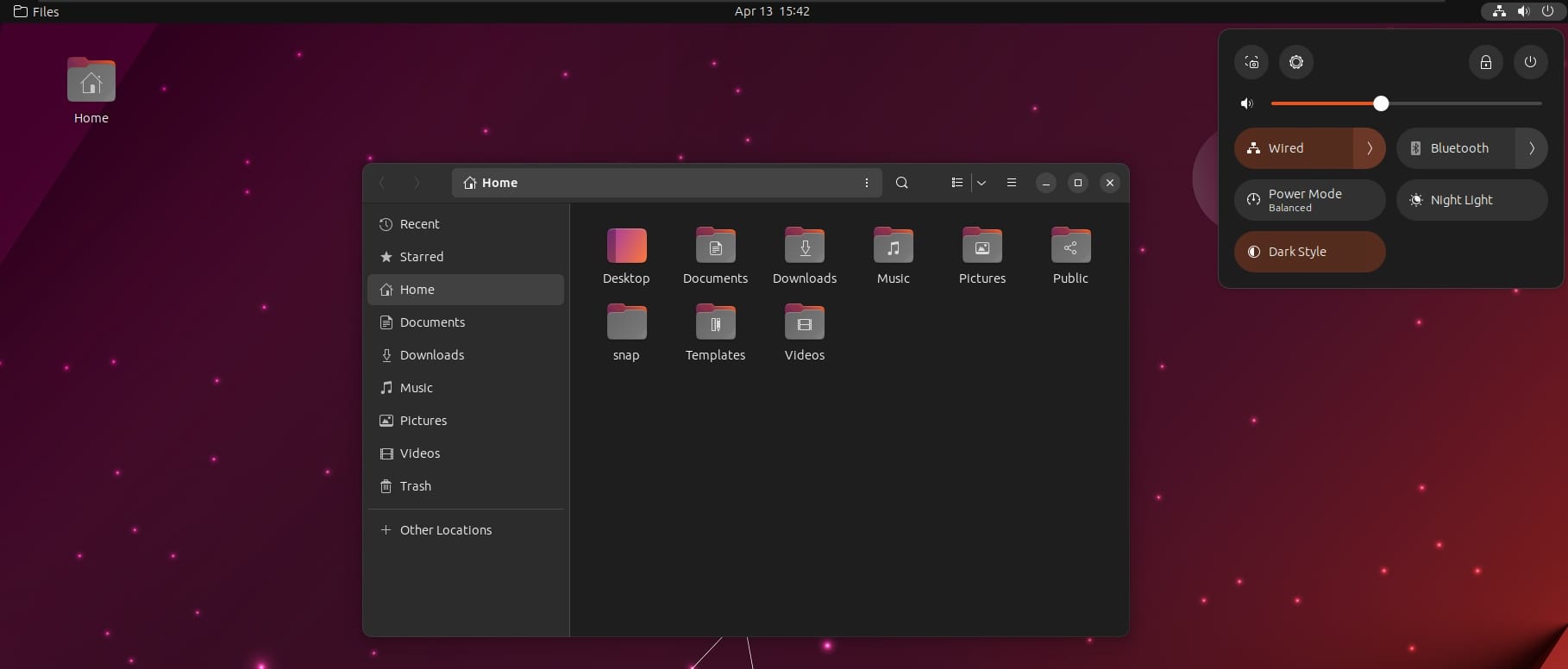
Ubuntu is undoubtedly one of the most popular Linux distributions. You can even find it pre-installed on a lot of laptops available.
The user interface is easy to get comfortable with. If you play around, you can easily customize the look of it as per your requirements. In either case, you can opt to install a theme as well. You can learn more about how to install themes in Ubuntu to get started.
In addition to what it offers, you will find a vast online community of Ubuntu users. So, if you face an issue – head to any forums (or a subreddit) to ask for help. If you are looking for direct solutions in no time, you should check out our coverage on Ubuntu (where we have numerous tutorials and recommendations for Ubuntu).
Linux Mint
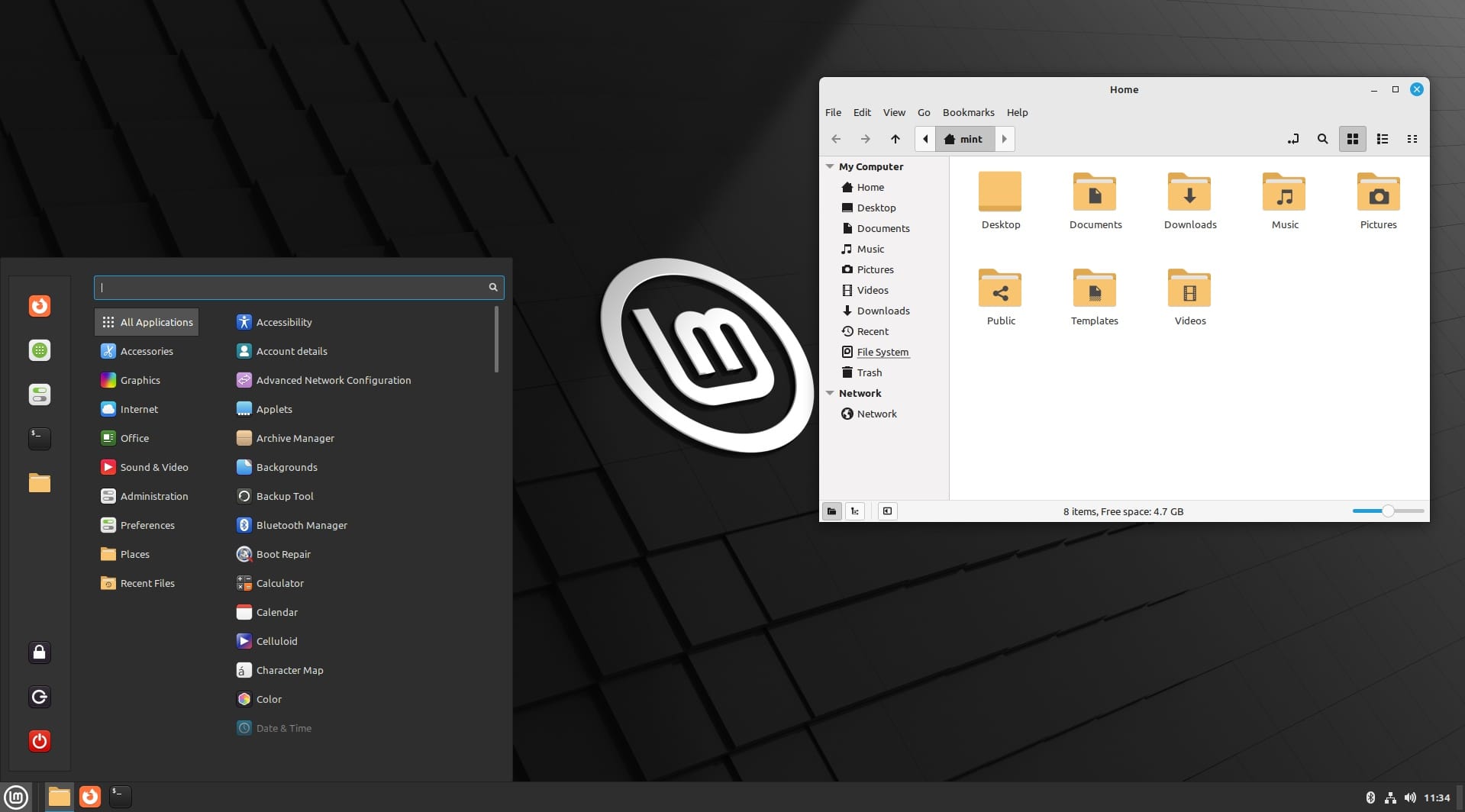
Linux Mint Cinnamon is another popular Linux distribution suitable for beginners. The default Cinnamon desktop resembles the layout of the Windows system, and this is why it is one of the best Windows-like Linux distros.
Not just limited to that, Linux Mint also does a few things better than Ubuntu.
Linux Mint is based on Ubuntu, and thus, it has all the applications available for Ubuntu. Its simplicity and ease of use make it a prominent choice for new Linux users.
elementary OS
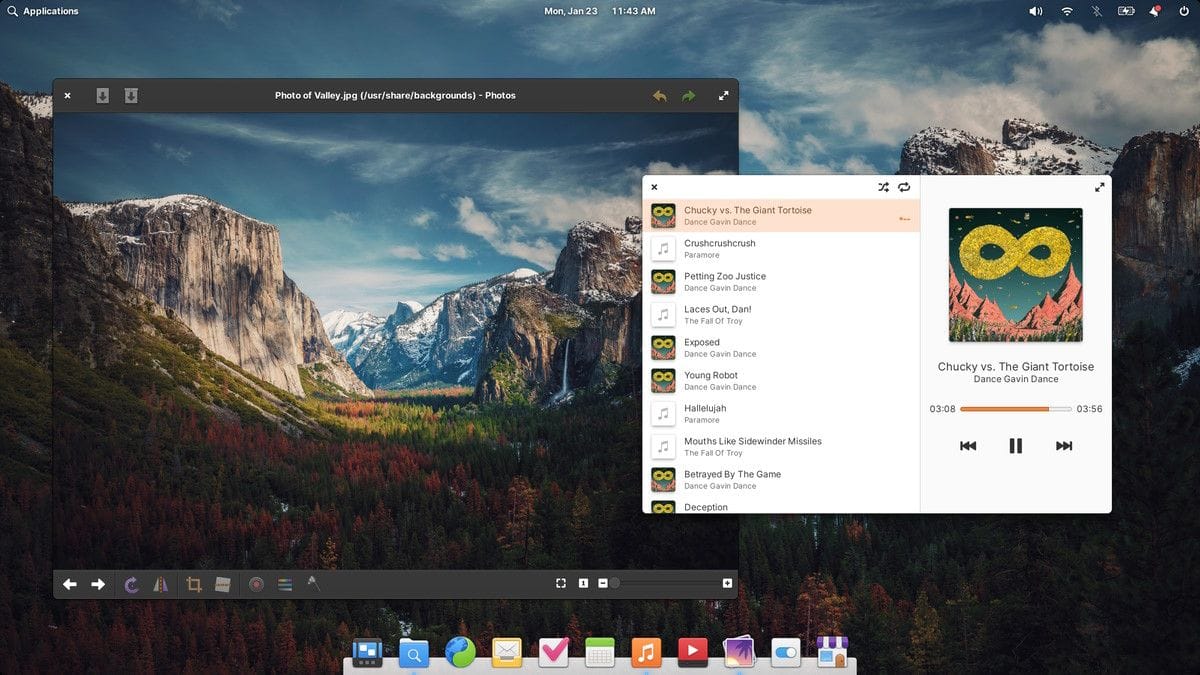
elementary OS is one of the most beautiful Linux distros I’ve ever used. The UI resembles that of macOS, and things have evolved with newer updates.
But, if you have already used a Mac-powered system, it’s easy to get comfortable with.
This distribution is based on Ubuntu and focuses on delivering a user-friendly Linux environment that looks as pretty as possible while keeping performance in mind.
MX Linux
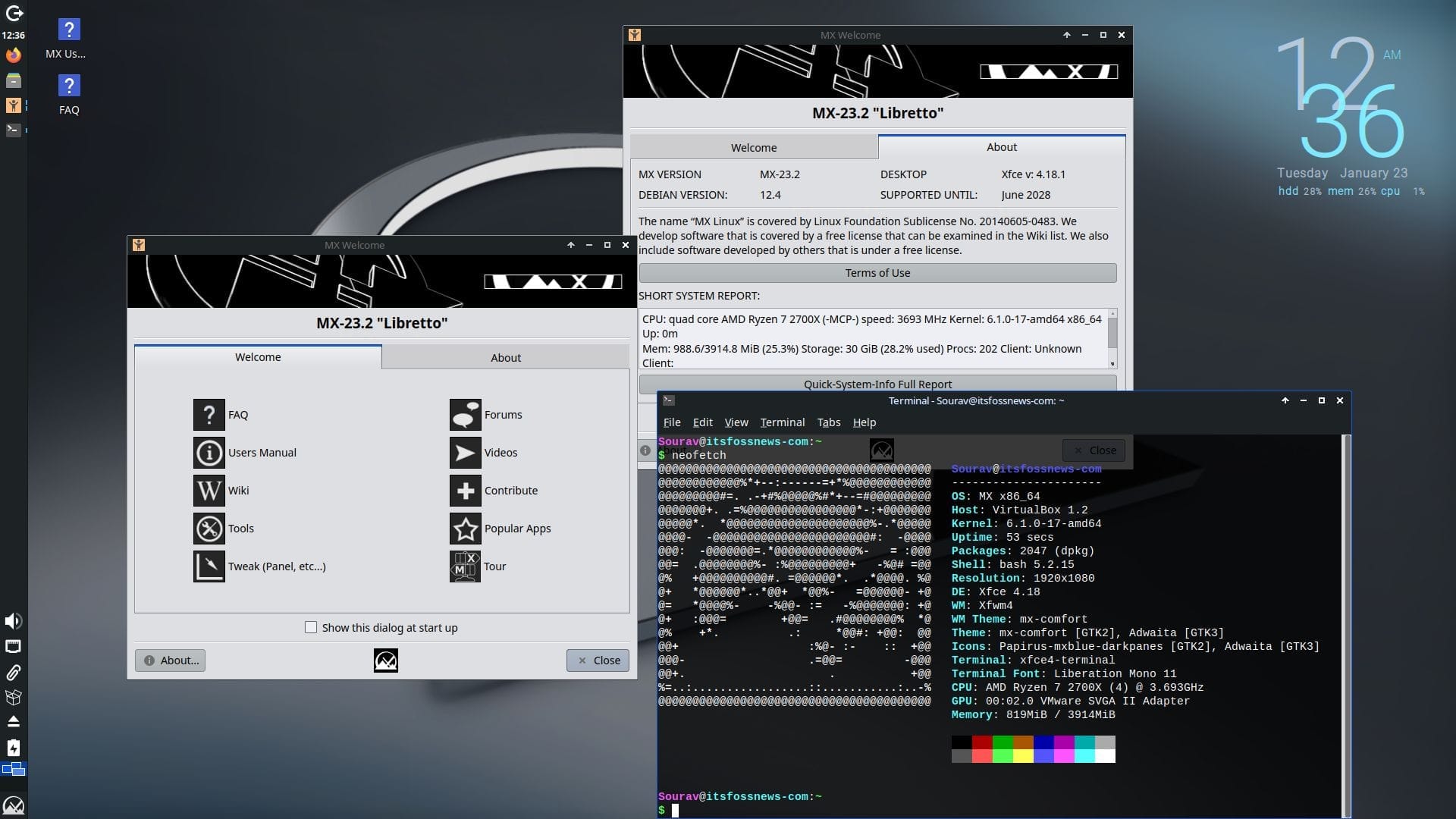
MX Linux is a quite popular Debian-based Linux distribution. It is known for its performance, simplicity, and a great out-of-the-box experience with its included MX tools.
Unlike Ubuntu, MX Linux features Xfce as its desktop environment. In addition to its impeccable stability—it comes packed with numerous GUI tools (MX Tools), which makes it easier for any user comfortable with Windows/Mac originally.
Furthermore, the package manager is perfectly tailored to facilitate one-click installations. You can even search for Flatpak packages and install them in no time (Flathub is available by default in the package manager as one of the sources).
Zorin OS

Zorin OS is yet another Ubuntu-based distribution that happens to be one of the most good-looking and intuitive OS for desktop. A lot of GUI-based applications come baked in as well.
It is almost a perfect desktop experience, technically and aesthetically.
You can also install it on older PCs –, however, make sure to choose the “Lite” edition. In addition, you have “Core”, “Education” & “Ultimate” editions. You can decide to install the Core edition for free – but if you want to support the developers and help improve Zorin, consider getting the Ultimate edition.
Zorin OS was started by two teenagers based in Ireland. You may read their story here.
Pop!_OS
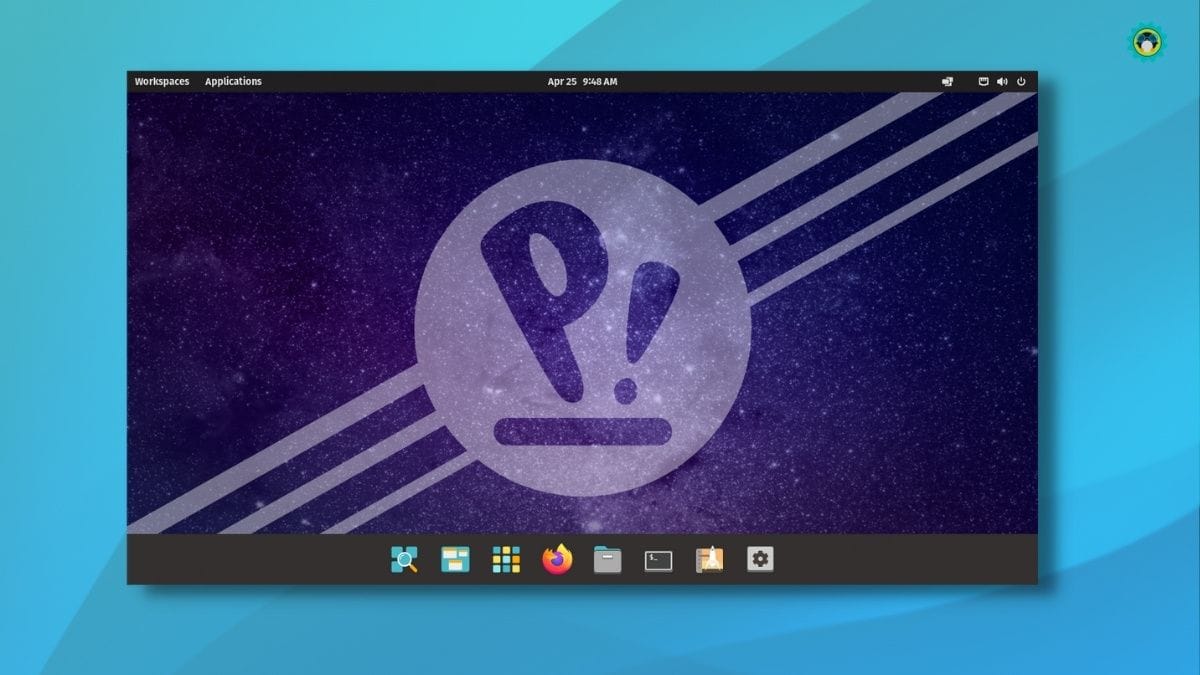
Pop!_OS by Sytem76 is an excellent pick for developers and other working professionals. Of course, not just limited to coders—it is also an excellent choice for any user looking for a unique desktop experience.
It is based on Ubuntu—but the UI feels much more intuitive and smooth. Not to forget, its COSMIC Desktop environment will soon be built using Rust from scratch, so you should keep an eye on it if you’re already impressed with its latest version.
Other Options
Deepin and other flavors of Ubuntu (like Kubuntu, Xubuntu) could also be some preferred choices for beginners. You can take a look at them if you are keen to explore more options.
If you want a challenge, you can indeed try Fedora over Ubuntu—but make sure to follow our article on Ubuntu vs Fedora to make a better decision from the desktop perspective.

Best Linux Server Distributions
For servers, the choice of a Linux distro comes down to stability, performance, and enterprise support. If you are experimenting, you can try any distro you want.
But, if you are installing it for a web server or anything vital – you should take a look at some of our recommendations.
Ubuntu Server
Depending on where you want it, Ubuntu provides different options for your server. If you are looking for an optimized solution to run on AWS, Azure, Google Cloud Platform, etc., Ubuntu Cloud is the way to go.
In either case, you can opt for Ubuntu Server packages and have it installed on your server. Nevertheless, Ubuntu is the most popular Linux distro when it comes to deployment on the cloud (judging by the numbers— source ).
Do note that we recommend you go for the LTS editions—unless you have specific requirements.
Red Hat Enterprise Linux
Red Hat Enterprise Linux is a top-notch Linux platform for businesses and organizations. If we go by the numbers, Red Hat may not be the most popular choice for servers. But, there’s a significant group of enterprise users who rely on RHEL (like Lenovo).
Technically, Fedora and Red Hat are related. Whatever Red Hat supports—gets tested on Fedora before making it available for RHEL. I’m not an expert on server distributions for tailored requirements—so you should check out their official documentation to know if it’s suitable for you.
SUSE Linux Enterprise Server
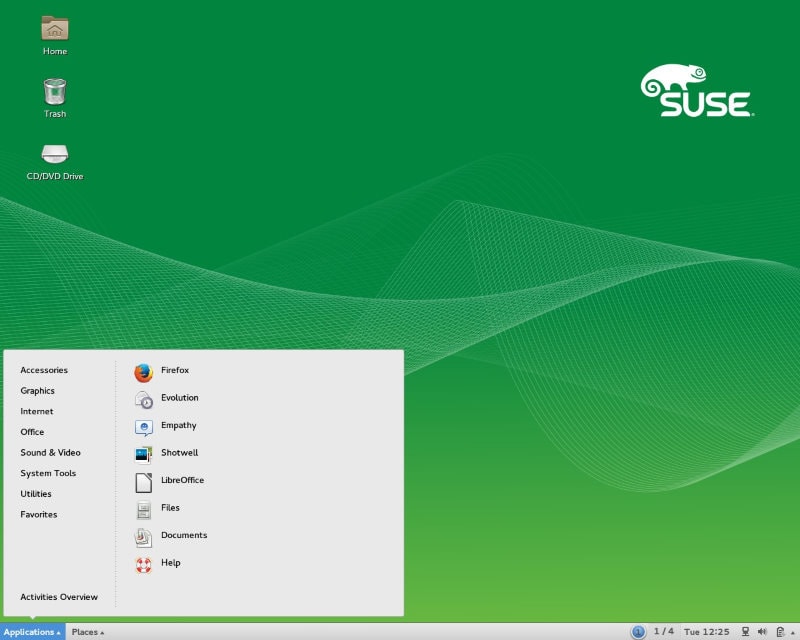
Fret not, do not confuse this with OpenSUSE. Everything comes under a common brand “SUSE”—but OpenSUSE is an open-source distro targeted and yet, maintained by the community.
SUSE Linux Enterprise Server is one of the most popular solutions for cloud-based servers. You will have to opt for a subscription to get priority support and assistance to manage your open-source solution.
CentOS Stream (or CentOS Alternatives)
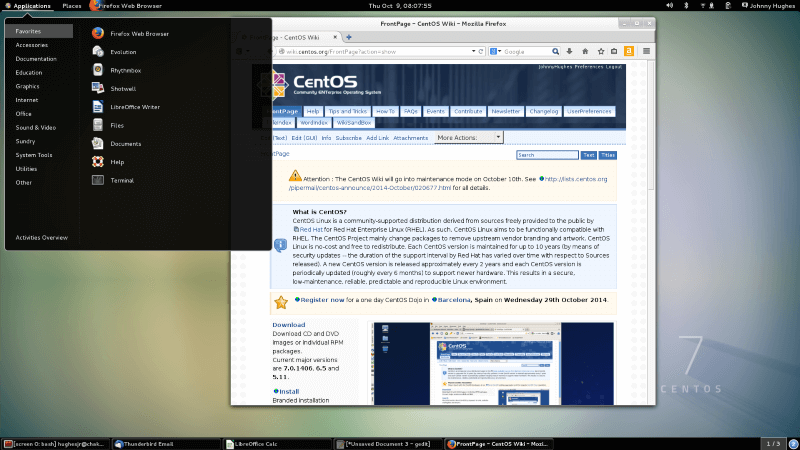
Yes, you can get RHEL subscription for free up to 16 servers without technical support. But, CentOS was more like a community edition of RHEL because it was derived from the sources of Red Hat Enterprise Linux.
But, now that CentOS has been replaced by CentOS Stream, you can either try CentOS Stream, which is upstream to Red Hat Enterprise Linux, or look for CentOS alternatives.
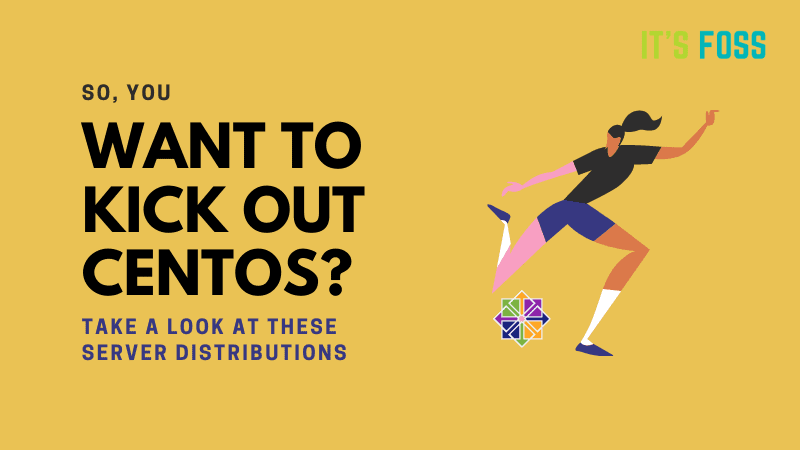
Cent OS 7 will be supported until 2024 and CentOS 8 has already reached the early end of life in 2021. So, you can try it as an experiment before trying CentOS alternatives or CentOS Stream.
Suggested Read 📖

Best Linux Distributions for Older Computers
If you have an old PC lying around or if you don’t really need to upgrade your system – you can still try some of the best Linux distros available.
We’ve already discussed some of the best lightweight Linux distributions in detail and top Linux distributions to support 32-bit computers. Here, we shall only mention what really stands out from that list (and some new additions).
Puppy Linux
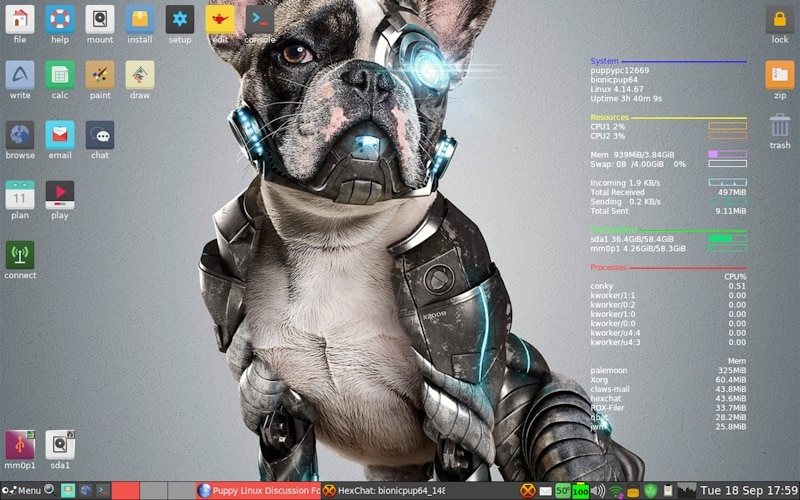
Puppy Linux is literally one of the smallest distributions there is. When I started to explore Linux, my friend recommended me to experiment with Puppy Linux because it can run on older hardware configurations with ease.
It’s worth checking it out if you want a snappy experience on your good old PC. Over the years, the user experience has improved along with the addition of several new useful features.
Solus Budgie
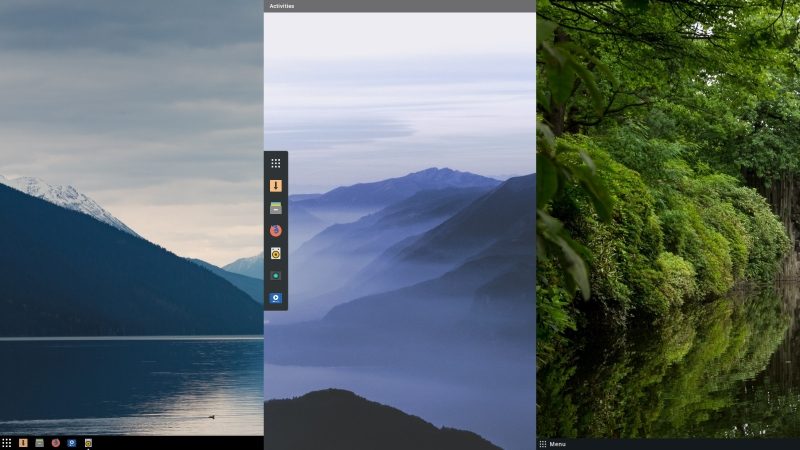
Solus offers the best of both worlds with its Budgie desktop edition. It is an impressive lightweight desktop OS. You can opt for desktop environments like GNOME or MATE as well.
The Budgie desktop is its key offering with interesting GUI tweaks while offering a unique desktop experience.
Bodhi

Bodhi Linux is built on top of Ubuntu. However, unlike Ubuntu – it does run well on older configurations.
The main highlight of this distro is its Moksha Desktop (which is a continuation of Enlightenment 17 desktop). The user experience is intuitive and screaming fast. Even though it’s not something for my personal use—you should give it a try on your older systems.
antiX

antiX – which is also partially responsible for MX Linux, is a lightweight Linux distribution tailored for old and new computers. The UI isn’t impressive—but it works as expected.
It is based on Debian and can be utilized as a live CD distribution without needing to install it. antiX also provides live bootloaders. In contrast to some other distros, you get to save the settings so that you don’t lose them with every reboot. Not just that, you can also save changes to the root directory with its “Live persistence” feature.
So, if you are looking for a live-USB distro to provide a snappy user experience on old hardware – antiX is the way to go.
Sparky Linux
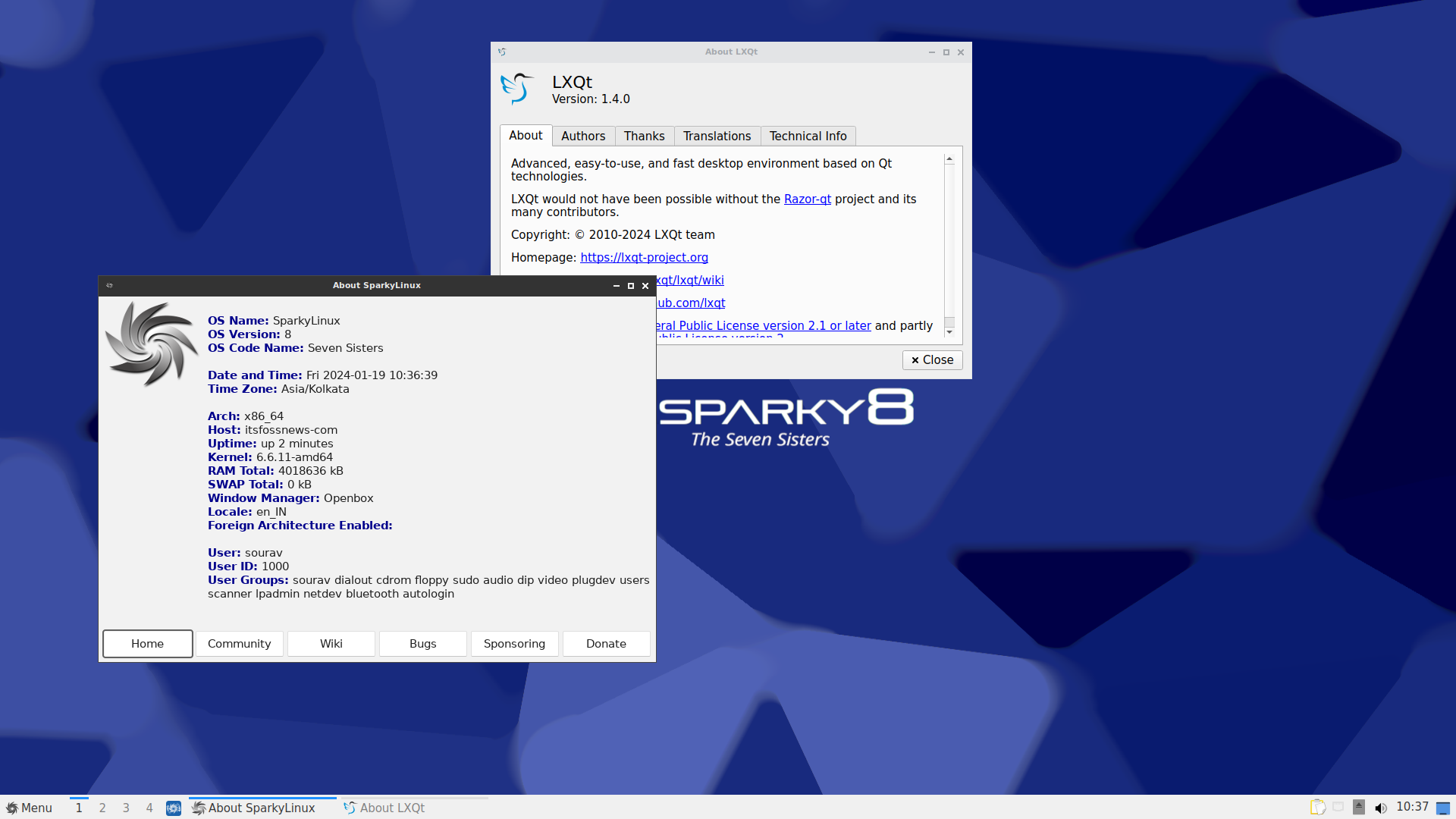
Sparky Linux is based on Debian which turns out to be a perfect Linux distro for low-end systems. Along with a screaming fast experience, Sparky Linux offers several special editions (or varieties) for different users.
For example, it provides a stable release (with varieties) and rolling releases specific to a group of users. Sparky Linux GameOver edition is quite popular for gamers because it includes a number of pre-installed games. You can check out our list of best Linux Gaming distributions—if you also want to play games on your system.
Suggested Read 📖

Best Linux Distro for Advanced Users
Once you get comfortable with the variety of package managers and commands to help troubleshoot your way to resolve any issue, you can start exploring Linux distros that are tailored for advanced users only.
Of course, if you are a professional – you will have a set of specific requirements. However, if you’ve been using Linux for a while as a common user – these distros are worth checking out.
Arch Linux
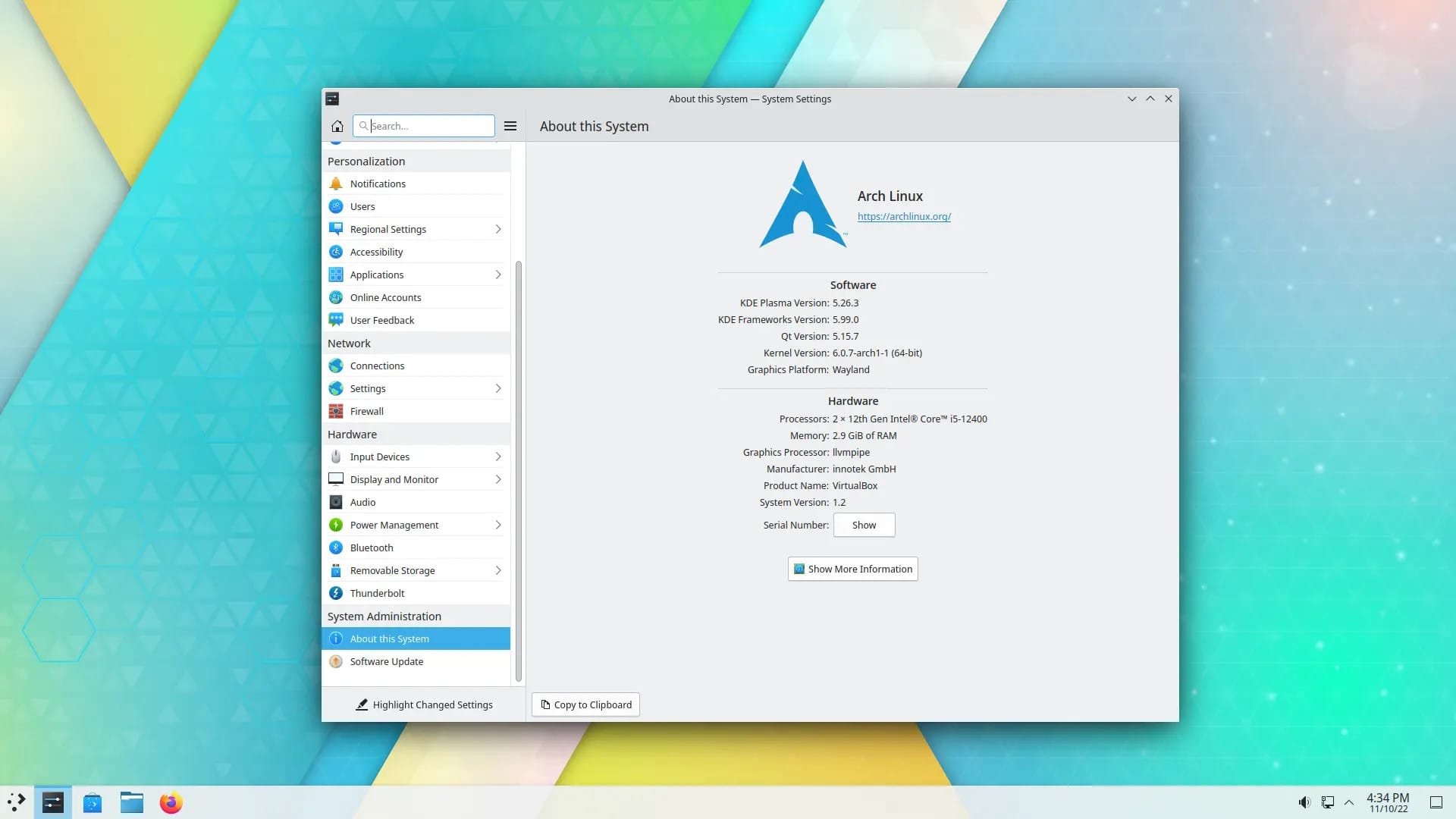
Arch Linux is itself a simple yet powerful distribution with a huge learning curve. Unlike others, you won’t have everything pre-installed in one go. You have to configure the system and add packages as needed.
Also, when installing Arch Linux, you will have to follow a set of commands (without GUI). To know more about it, you can follow our guide on how to install Arch Linux. If you are going to install it, you should also know about some of the essential things to do after installing Arch Linux. It will help you get a jump start.
In addition to all the versatility and simplicity, it’s worth mentioning that the community behind Arch Linux is very active. So, if you run into a problem, you don’t have to worry.
Gentoo
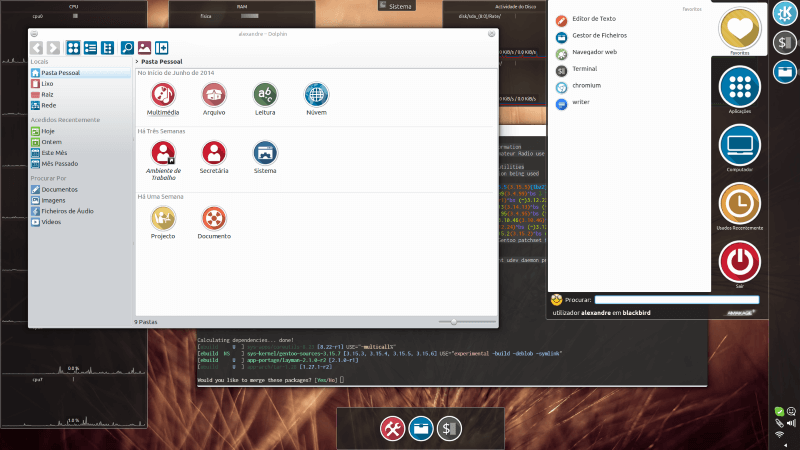
If you know how to compile the source code, Gentoo Linux is a must-try for you. It is also a lightweight distribution – however, you need to have the required technical knowledge to make it work.
Of course, the official handbook provides a lot of information that you need to know. But, if you aren’t sure what you’re doing – it will take a lot of your time to figure out how to make the most out of it.
Slackware
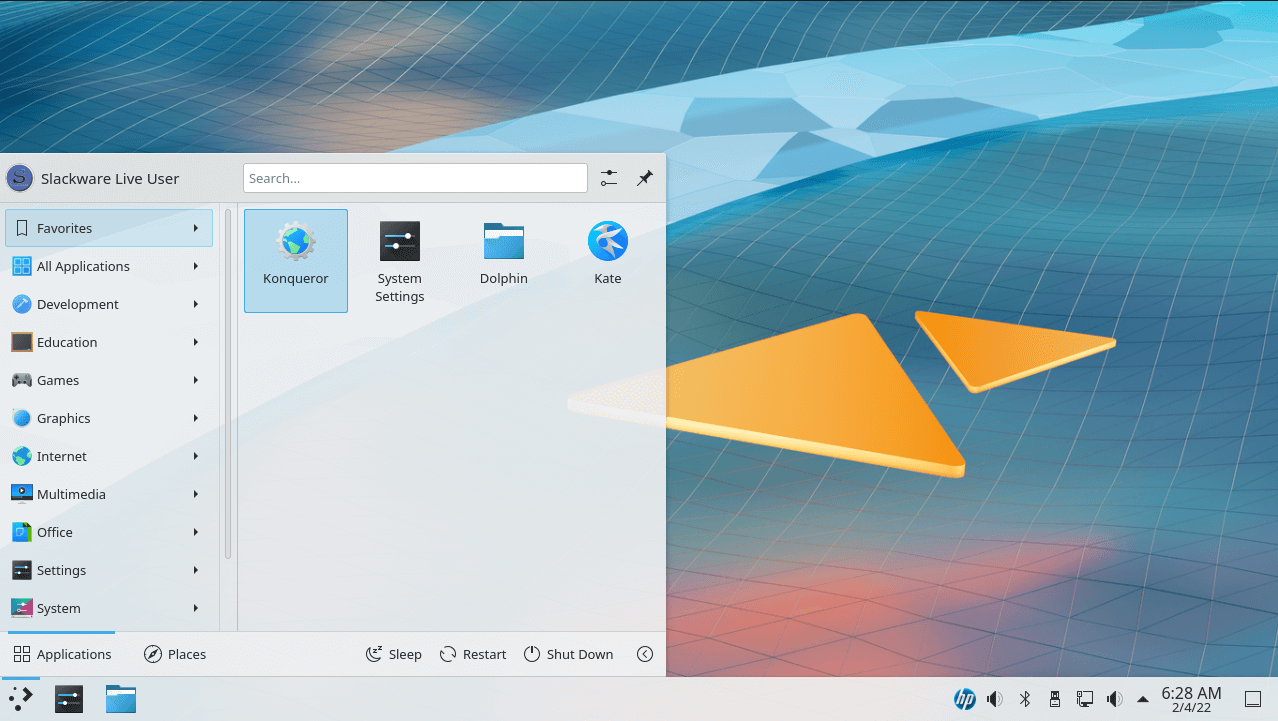
Slackware is one of the oldest Linux distributions that still matters. If you are willing to compile or develop software to set up a perfect environment for yourself—Slackware is the way to go.
If you’re curious about some of the oldest Linux distros, we have an article on the earliest linux distributions – go check it out.
Even though the number of users/developers utilizing it has significantly decreased, it is still a fantastic choice for advanced users. Not to forget, Slackware is still active.
Best Multi-purpose Linux Distribution
There are certain Linux distros that you can utilize as a beginner-friendly / advanced OS for both desktops and servers. Hence, we thought of compiling a separate section for such distributions.
If you don’t agree with us (or have suggestions to add here) – feel free to let us know in the comments. Here’s what we think could come in handy for every user:
Fedora

Fedora offers two separate editions – one for desktops/laptops and the other for servers (Fedora Workstation and Fedora Server, respectively).
So, if you are looking for a snappy desktop OS—with a potential learning curve while being user-friendly – Fedora is an option. In either case, if you are looking for a Linux OS for your server—that’s a good choice as well.
Manjaro
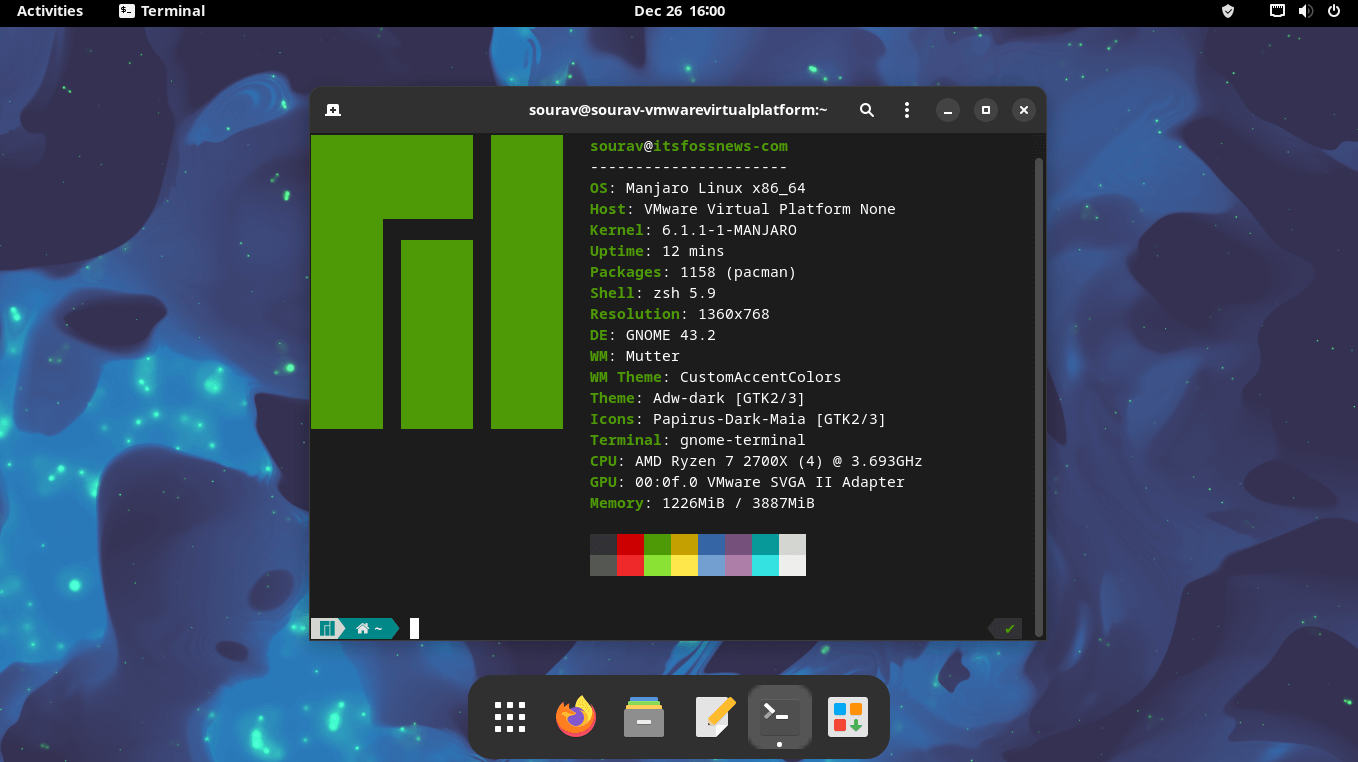
Manjaro is based on Arch Linux. Fret not, while Arch Linux is tailored for advanced users, Manjaro makes it easy for a newcomer. It is a simple and beginner-friendly Linux distro. The user interface is good enough and offers a bunch of useful GUI applications built-in.
You get options to choose a desktop environment for Manjaro while downloading it. Personally, I like the KDE desktop for Manjaro.
Debian
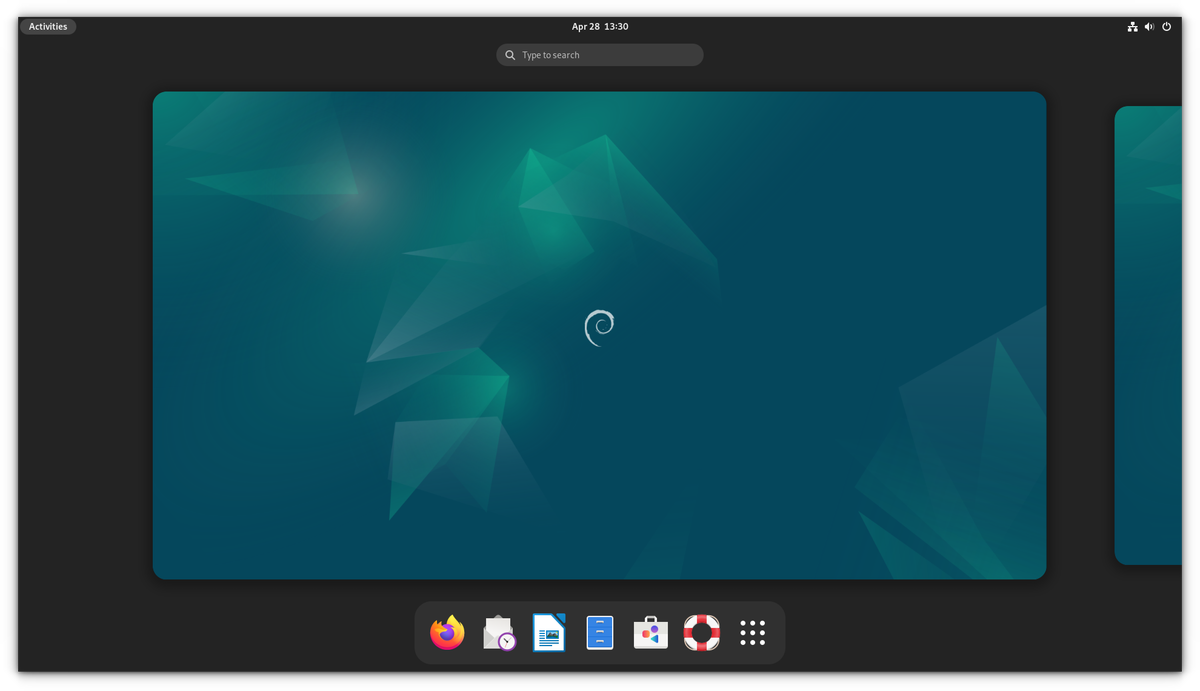
Well, Ubuntu’s based on Debian—so it must be a darn good distribution itself. Debian is an ideal choice for both desktops and servers.
It may not be the best beginner-friendly OS – but you can easily get started by going through the official documentation. The recent release of Debian 12 ‘Bookworm’ introduces many changes and necessary improvements. So, you must give it a try!
Wrapping Up
Overall, these are the best Linux distributions that we recommend you try. Yes, there are a lot of other Linux distributions that deserve mention—but to each of their own, depending on personal preferences—the choices will be subjective.
But we also have a separate list of distros for Windows users, hackers and pen testers, gamers, programmers, and privacy buffs. So, if that interests you—do go through them.
💬 If you think we missed listing one of your favorites that deserves as one of the best Linux distributions out there, let us know your thoughts in the comments below, and we’ll keep the article up-to-date accordingly.


